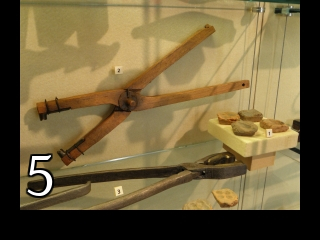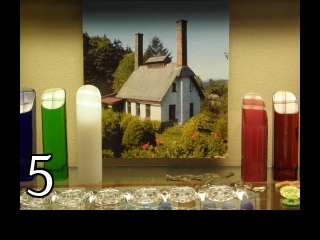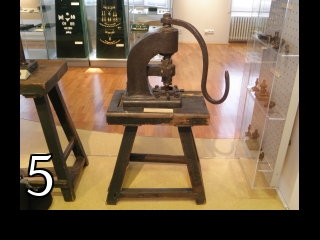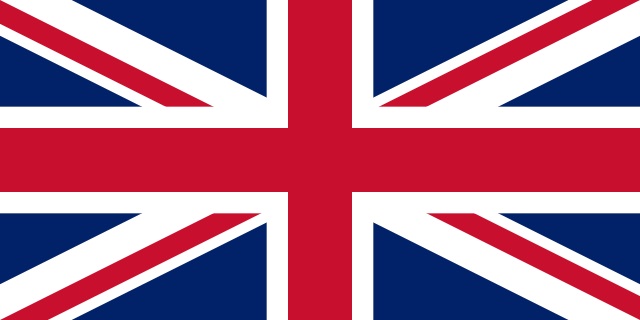Museum of Glass and Jewellery in Jablonec nad Nisou



Presser pliers
Transcript
The local producers of costume jewellery were always on the lookout for innovations, and they developed many new manufacturing processes that made work easier and saved both time and money. One example are these seemingly ordinary presser pliers. At the beginning of the 18th century, glass stones were cut on grit sandstones from pieces of molten glass just as real precious stones were. In later years, the stones were cut from pressed pieces produced in clay moulds. Wooden tongs with metal dies, called “kaplíky” or “caps” by the locals, came into use by about 1750 and were used to press or squeeze glass from glass rods. The desired form was then only slightly finished on a grinder. After 1820, all-metal presser pliers with exchangeable dies began to be used. By the middle of the 19th century and afterwards, mechanical machine presses were used instead. Around 1830, the Jizera region saw the first presser huts or drykets, to this day a typical local feature. Usually these are small houses with one or two tall chimneys and a chimney hood or bonnet – a roof-covered opening in the ceiling to remove heat from the working area. In these huts, glass costume jewellery was given its shape with pliers or presses. In addition to pressed and cut glassware, metal costume jewellery developed rapidly in the Jizera Mountains by about 1850. The chief novelty was the stamping and cutting of metal semi-finished products with a machine developed between 1838 and 1840 by the Dalešice blacksmith Kajetan Schier, upon orders from the Jablonec craftsman Anton Rössler. Until his death in 1852, Schier was the sole manufacturer of these machines in the region. The one on view here was also made by him. The embosser inspired by the bookbinding press improved and accelerated the production of metal costume jewellery.
